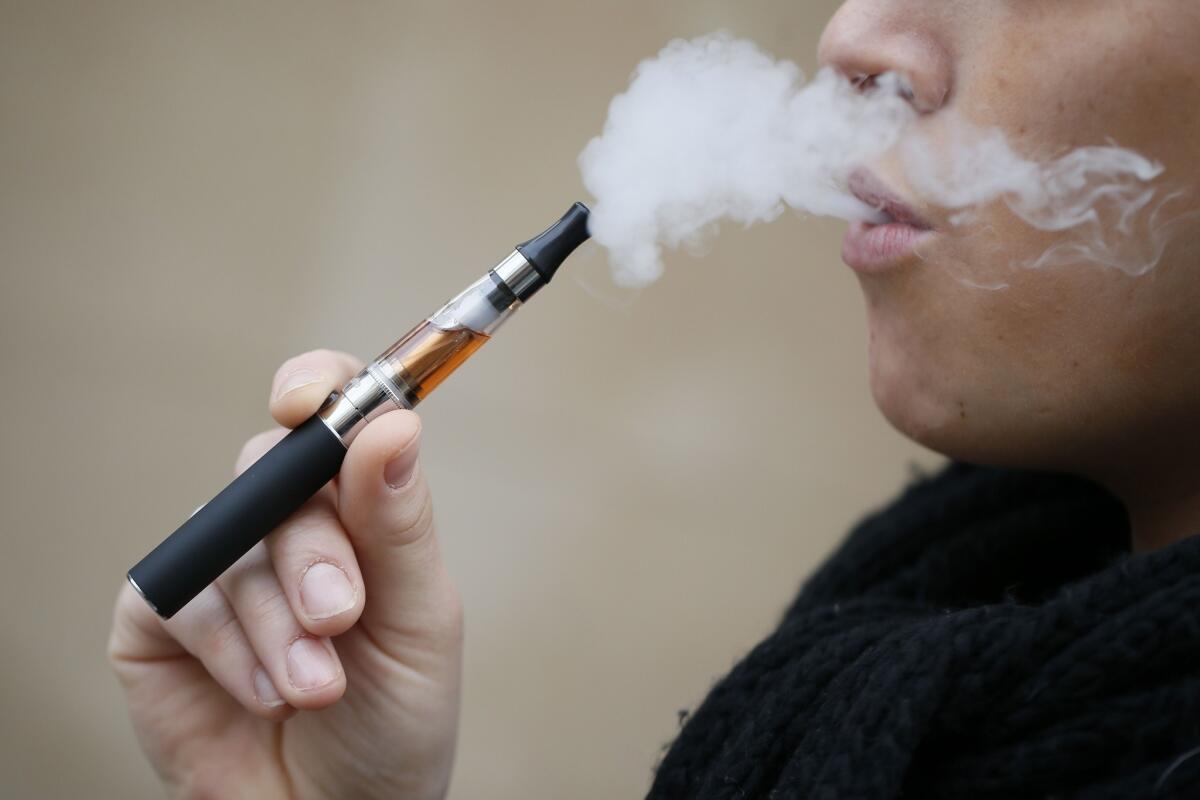China and India turn against vaping. But Europe sees it as safer than cigarettes

Electronic cigarette makers were counting on Asia as a growth market. But the region may not be a refuge from an escalating crackdown in the U.S.
India banned electronic cigarettes last week, days after Juul Labs Inc.’s products vanished from online Chinese marketplaces. India’s government announcement banning the sale and production of all e-cigarettes echoed growing concerns worldwide over health risks associated with the smokeless nicotine devices popular with teenagers.
“Why are we debating if it’s more harmful or less? It is harmful. It is addictive,” said Preeti Sudan, India’s health secretary. “The entire next generation will be going down the drain if we don’t control it now.”
Originally touted as a safer alternative to wean people off cigarettes, e-cigarettes have come under widespread attack in the U.S., especially for their appeal among youth. Authorities have reported 530 suspected cases of vaping-related lung illnesses nationwide, including 70 in California. India’s decision follows similar prohibitions in about 27 other countries including Australia, Singapore and Brazil.
But some nations still view e-cigarettes as viable alternatives to smoking, a leading cause of preventable death. Public health officials in Britain, the biggest market in Europe for the products, endorse vaping as a way to wean people off smoking. It’s the prevailing view across Europe, where authorities are more sanguine because the ailments popping up in the U.S. have largely been linked to vaping liquids laced with THC, the psychoactive compound in cannabis, which is off-limits in much of Europe.
Use among European teenagers is also much lower than in the U.S., as is the nicotine content in popular vaping products.
“If you’re a smoker and you have not stopped smoking, try vaping,” Martin Dockrell, head of tobacco issues at Public Health England, said in an interview posted on his Twitter feed this month. The government agency has repeatedly said vaping is 95% less harmful than cigarettes.
Vaping companies had been setting their sights on Asia, where 65% of the world’s cigarettes are sold. India alone has 266.8 million tobacco users, according to a World Health Organization fact sheet.
Juul only started selling its nicotine vaporizers online in China two weeks ago. Its official online stores disappeared on Alibaba Group Holding Ltd.’s Tmall and JD.com Inc. by Tuesday, prompting speculation that official action may be on the way.
Juul wasn’t given a reason for why its products were pulled, according to a person familiar with the matter, but said in a statement that it wanted to make them available again.
It isn’t clear whether China plans to ban or enforce stricter scrutiny of e-cigarettes or vaping devices. The country’s National Health Commission — a body responsible for health and sanitation — announced it was devising legislation for such products in July, arguing the “hazards of e-cigarettes should be highly valued.”
The Chinese health commission also said labels describing nicotine concentration on many such products are vague and can lead to excessive consumption by users.
European authorities have combined their embrace of e-cigarettes with tougher regulations — restricting marketing to children, for example, and imposing lower limits on nicotine content — that have made the new devices more acceptable to health officials. Britain prohibits vaping companies from targeting teens. Real or fictitious characters that could appeal to youths are banned, as are depictions of e-cigarette users who appear to be under 25.
The European Union also has lower limits on nicotine levels in e-cigarette fluid, permitting a maximum of 20 milligrams per milliliter, compared with 59 milligrams per milliliter in Juul Labs Inc.’s vape hits. In order to enter EU markets such as Britain, the U.S. company has had to dilute its nicotine liquids there.
Smoking rates have fallen in several countries, while vaping numbers have climbed. In the U.S., about 13% of the population smoked cigarettes last year, down from some 18% in 2013, according to Euromonitor International. In Britain, the rate has come down to 14% from 19%, while declines have been slower in countries like France and Germany.
More to Read
Inside the business of entertainment
The Wide Shot brings you news, analysis and insights on everything from streaming wars to production — and what it all means for the future.
You may occasionally receive promotional content from the Los Angeles Times.










